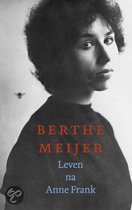From the New York Daily News:
A writer who specializes in young adult novels has penned a racy fictional diary by Peter van Pels, the boy who lived in the same building as Frank in Amsterdam while she was in hiding during the Nazi occupation.Of course, this isn't the first time Peter van Pels has been the focus of an alternate-history novel. Ellen Feldman's The Boy Who Loved Anne Frank imagines van Pels as a post-war refugee in the U.S. whose life is turned upside-down after Anne's published diary becomes an international sensation. Apart from the obvious truth that Peter never made it out of Mauthausen alive, however, the book was pretty true to Peter's known character and loaded with pieces of Annex history. I can only hope that Dogar's book is as accurate, but her confession to writing scandalous scenes between Anne and Peter that were based on "pure conjecture" leaves me doubtful.
According to London's Sunday Times, author Sharon Dogar's book, "Annexed," includes graphic descriptions of van Pels' and Franks' adolescent romance, which Frank hinted at in her actual diary, published in 1947.
Charlie Sheppard, the editorial director at Anderson Press, which will publish the book this fall, says Dogar thinks the duo slept together.
"Sharon reread and reread Anne's diaries, and is in no doubt that they were in love," she told the Times. "They also talk about sex in the diaries. After all, the hormones of both were raging."
But Buddy Elias, Frank's first cousin, has criticized "Annexed" for straying from the truth.
"Anne was not the child she is in this book," he told the U.K. newspaper. "I also do not think that their terrible destiny should be used to invent some fictitious story."
Elias learned about van Pels and Frank from her father, Otto, who survived the war and eventually published his daughter's diaries.
"From what Otto told me about Peter, he was very shy but in this book he is given a character he did not possess," he told the Times.
For her part, Dogar told the Times that she did not want to discuss the details of her book but that it was "pure conjecture" that Frank and van Pels made love."
Nothing Anne wrote in any version of her diary indicates that she ever made it to "third base" with young Mr. van Pels, or that she would have wanted to -- "Anne's moral upbringing precluded that, as did the many things Anne objected to in Peter's character." (AF:B, p.216). Moreover, it isn't in keeping with what we know of Anne and Peter -- and, more urgently, their parents -- to imply that they weren't vigilant enough about their situation in the Annex to not risk a pregnancy. Did Dogar even read the diary?
I don't understand why so many writers feel the need to turn history into a series of dumbed-down love stories to sell books. No wonder people aren't taking Anne Frank's story seriously anymore. :(



